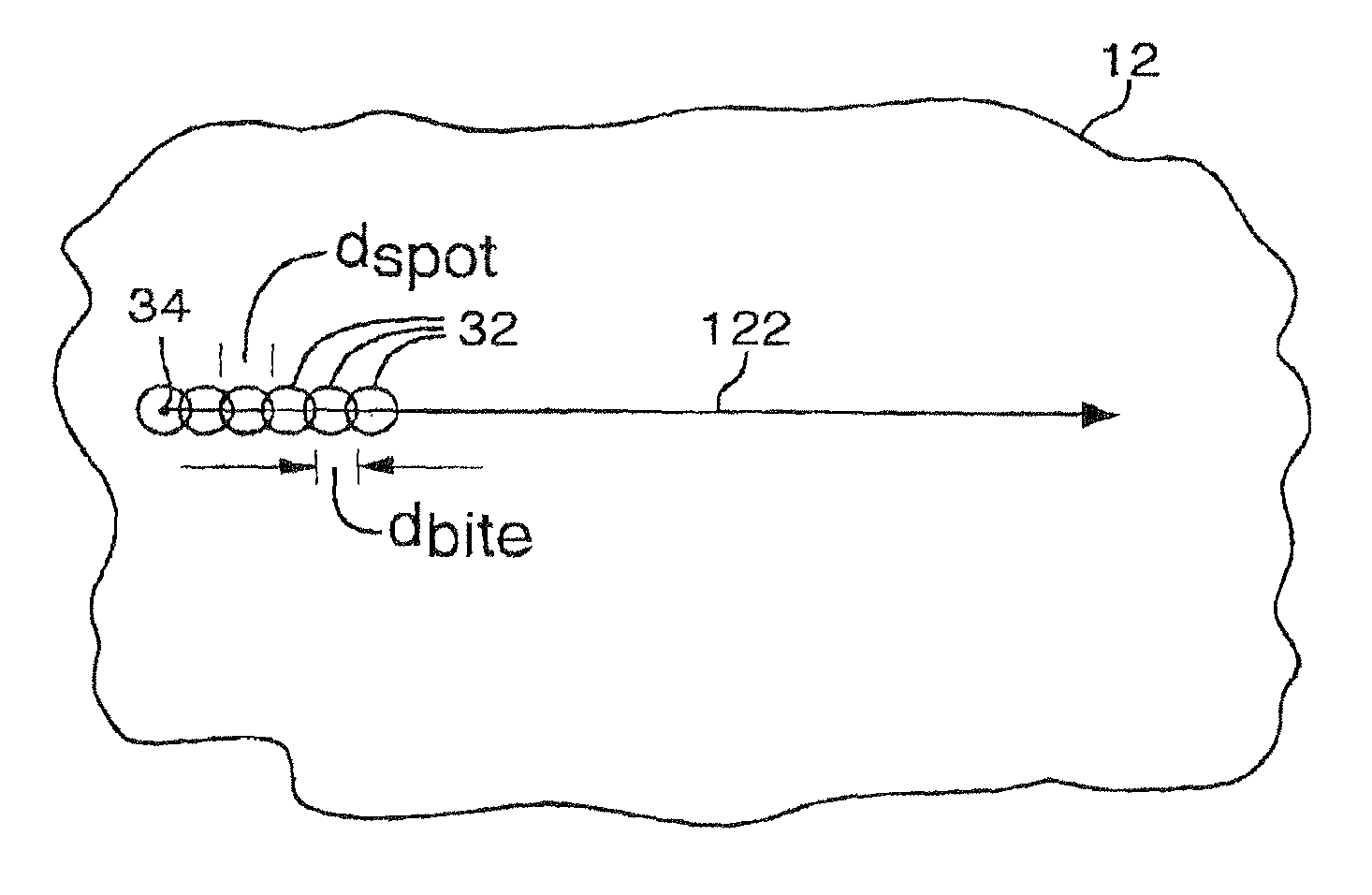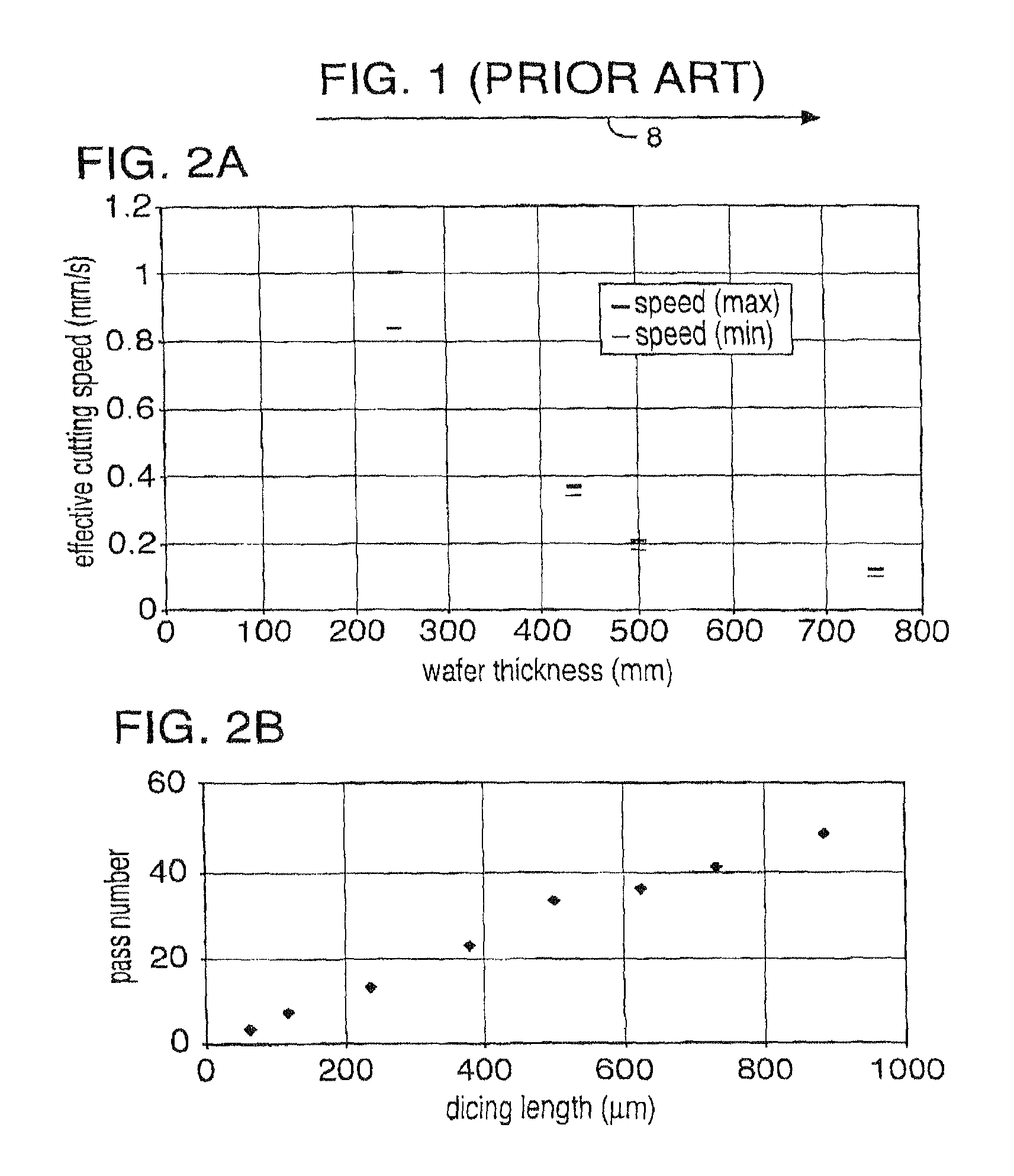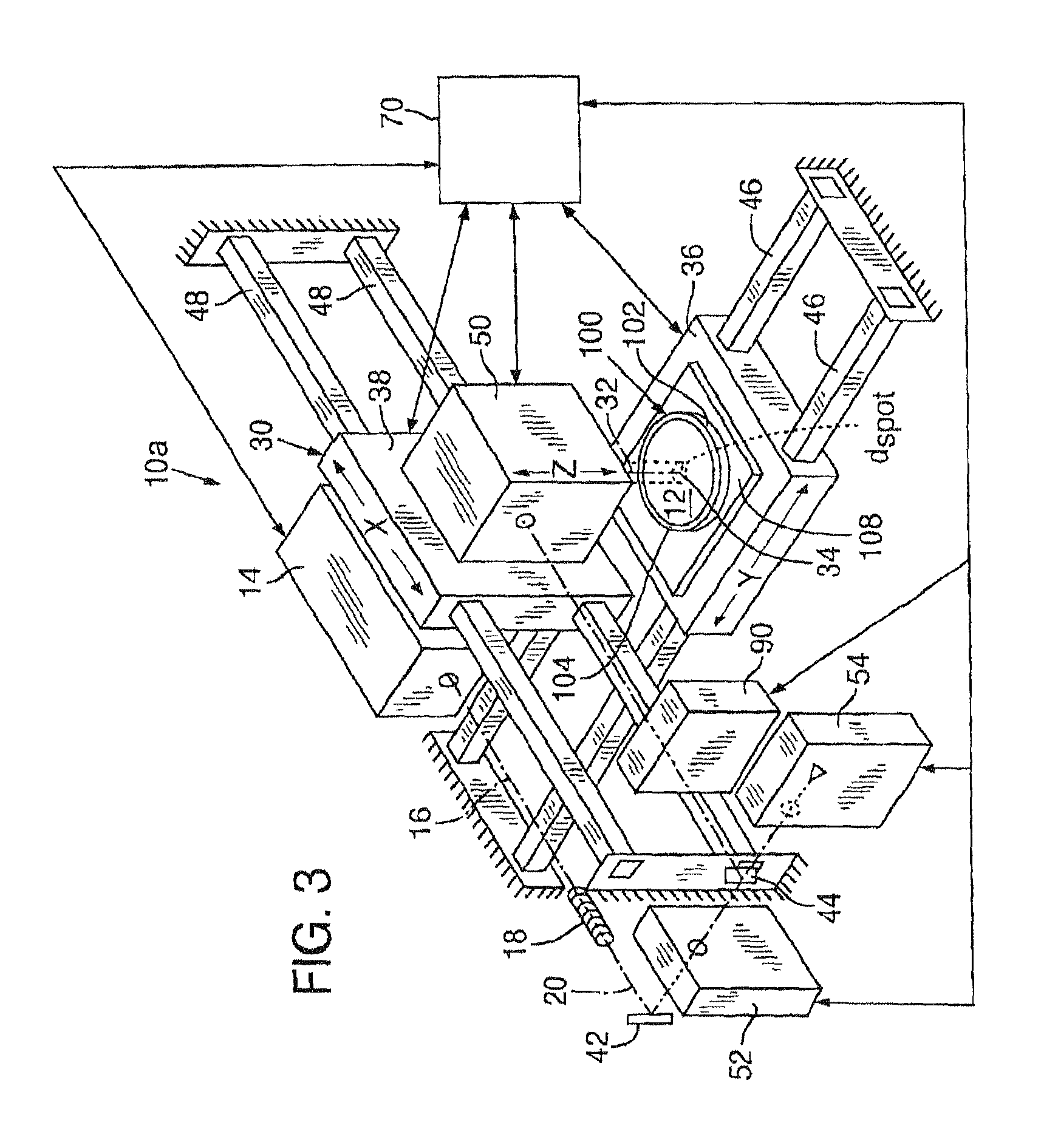Laser segmented cutting, multi-step cutting, or both
a laser cutting and segmented technology, applied in welding/soldering/cutting articles, manufacturing tools, electric/magnetic/electromagnetic heating, etc., can solve the problems of increasing chipping, curved or slanting cuts, and dicing blades tend to wear relatively quickly, so as to improve the throughput of laser cutting silicon or other materials
- Summary
- Abstract
- Description
- Claims
- Application Information
AI Technical Summary
Benefits of technology
Problems solved by technology
Method used
Image
Examples
Embodiment Construction
[0086]FIGS. 3 and 4 illustrate alternative embodiments of respective exemplary laser processing systems 10a and 10b (generically 10) utilizing a compound beam positioning system 30 equipped with a wafer chuck assembly 100 that can be employed for performing segmented cutting, such as trenching, slicing, or dicing semiconductor workpieces 12, in accordance with the present invention. With reference to FIGS. 3 and 4, an exemplary embodiment of a laser system 10 includes a Q-switched, diode-pumped (DP), solid-state (SS) UV laser 14 that preferably includes a solid-state lasant such as Nd:YAG, Nd:YLF, Nd:YAP, or Nd:YVO4, or a YAG crystal doped with holmium or erbium. Laser 14 preferably provides harmonically generated UV laser output 16 of one or more laser pulses at a wavelength such as 355 nm (frequency tripled Nd:YAG), 266 nm (frequency quadrupled Nd:YAG), or 213 nm (frequency quintupled Nd:YAG) with primarily a TEM00 spatial mode profile.
[0087]In a preferred embodiment, laser 14 inc...
PUM
| Property | Measurement | Unit |
|---|---|---|
| dimension | aaaaa | aaaaa |
| diameter | aaaaa | aaaaa |
| diameter | aaaaa | aaaaa |
Abstract
Description
Claims
Application Information
 Login to View More
Login to View More - R&D
- Intellectual Property
- Life Sciences
- Materials
- Tech Scout
- Unparalleled Data Quality
- Higher Quality Content
- 60% Fewer Hallucinations
Browse by: Latest US Patents, China's latest patents, Technical Efficacy Thesaurus, Application Domain, Technology Topic, Popular Technical Reports.
© 2025 PatSnap. All rights reserved.Legal|Privacy policy|Modern Slavery Act Transparency Statement|Sitemap|About US| Contact US: help@patsnap.com



